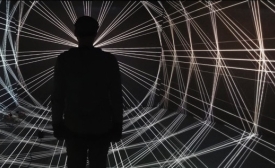social media diplomacy
On Friday, State Department officials announced that they would revamp their efforts to counter ISIS messaging online — among other ways, by opening a new “Global Engagement Center.” That same day, the President and various high-ranking members of the national security establishment met with representatives from Facebook, Twitter, YouTube, and other Internet powerhouses to discuss how the United States can fight ISIS messaging via social media.
The Obama administration on Friday announced an overhaul of its efforts to respond to online propaganda from the Islamic State after months of acknowledgments that it had largely failed in its attempts to counter extremist recruitment and exhortations to violence on social media. The administration has emphasized that it needs the assistance of some of the nation’s biggest technology companies, and a group of top White House and national security officials flew to California on Friday to plead their case with executives.
The past two weeks have seen the onset of a new cycle of violence between Israel and Palestine. To date, this cycle has claimed the lives of tens of Palestinians and Israelis. As the violence wages on, both Israel and Palestine have turned to social media in order to offer their interpretation of events. From a research perspective, this use of social media offers a glimpse into how nations use digital diplomacy in times of crisis.
Prime Minister Narendra Modi told Mark Zuckerberg that social media can show governments where they’re going wrong, and allow heads of state to connect more personably than ever before. During a townhall Q&A at Facebook’s Menlo Park headquarters, the two leaders talked about the modernization of India and discussed topics from the 40,000 questions and comments submitted by the public.

This new report from the Clingendael Institute assesses the field and functionality of digital diplomacy in today's domestic and international policy environments.







